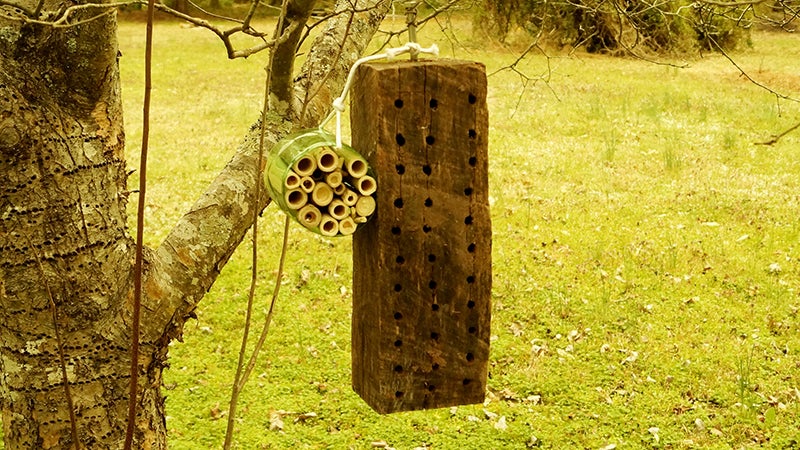Create a nest for busy Mason Bees
Published 10:43 pm Friday, May 8, 2020

- There are two examples of do-it-yourself nests that can easily be made for Mason bees. The one at left uses short bamboo sticks, and the other method is to get a block of untreated wood. Choose a site where these can be left at least through the spring of the next year.
|
Getting your Trinity Audio player ready...
|
By John Bunch
Virginia Master Naturalist
When it comes to bees these days, the Honey bees seem to get all the press, be it due to their pollination activities or the devastating effects of pesticides. But there’s a group of bees known collectively as Mason bees that should be getting our attention as well. As it turns out, Mason bees are better pollinators than the Honey bees. According to the internet site Keeping Backyard Bees, Mason bees — due to their sloppy nature while visiting flowers — produce about a 95 percent pollination rate whereas the Honey bees only about a 5 percent rate. Reason being, a Mason bee visiting flowers will become covered with pollen so more readily dusts the stamens as opposed to the Honey bee, which uses a more organized and tidy approach to pollen collecting.
Mason bees are small and solitary and when the female mates with the male, she will search out small cavities or tubes in which to lay her eggs. Within that tube, she’ll first lay in a small store of pollen, deposit an egg on it, and then using mud, seal it by forming a chamber, hence the name mason. She’ll repeat this process until the tube is filled with sections containing the pollen and eggs. Because of her manner of egg laying, we’re given the opportunity to invite these pollinating bees into our gardens by creating a structure in which she can lay her eggs.
There are two examples of do-it-yourself nests that can easily be made. One is using short bamboo sticks, about 6 inches long and ½ inch in diameter, gathered together in a bundle, with one end closed off, and all hung together as one in tree near your garden. The other method is to get a block of untreated wood, drill 1/3 inch or 8-millimeter holes into it (but not all the way through) and hang this as well. Choose a location where these can be left at least through the spring of the next year.
Masons don’t travel as far afield as do Honey bees, so if you put up tubes for them and they are utilized, you can feel certain that these bees are visiting your plants. Since the Masons don’t create and put up honey stores, this means that the adults don’t overwinter and actually live for only about 2-3 months. Those eggs that are laid in the spring will develop on their own over the course of the year and emerge the following spring. So think about putting up a structure and invite these hard-working bees into your yard.



